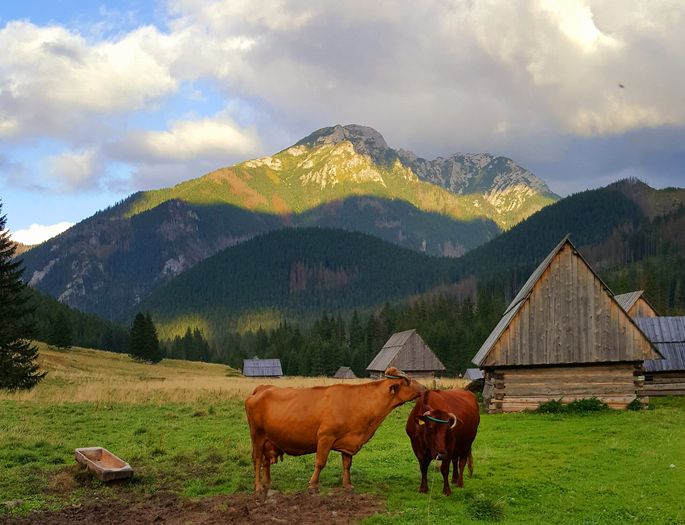
Grasslands in two largest European mountain ranges – the Alps and Carpathians - are rapidly shrinking and their biodiversity is decreasing because of either the decline in agricultural use or overexploitation. Within the framework of the BiodivProtect grant, researchers will indicate the most ecologically valuable mountain areas and suggest the optimal conservation methods that could be introduced there.
The National Science Centre has recently published the results of the first edition of the competition: BiovivProtect: Supporting the protection of biodiversity across land and sea. It was announced in October 2021 and has focused on such topics as ‘Knowledge for identifying priority conservation areas, establishing effective and resilient ecological networks, enhancing species-based protection, and preserving genetic diversity’, ‘Multiple benefits and costs of biodiversity and ecosystem protection: synergies and trade-offs’, and ‘Effective management and equitable governance to deliver bold conservation outcome’. 209 international grant applications were filed in the competition, 36 of which were accepted for funding, which amounts to 40 million euro in total. Three of the awarded projects will be carried out by Polish research centres: the Jagiellonian University, the Adam Mickiewicz University in Poznan, and the Institute of Oceanology at the Polish Academy of Sciences.
The Polish team in one the projects: Grasslands for biodiversity: supporting the protection of the biodiversity-rich grasslands and related management practices in the Alps and Carpathians will be headed by Dr Dominik Kaim from the Jagiellonian University Faculty of Geography and Geology. The research will be conducted in collaboration with partners with Germany, Romania, Slovakia, Switzerland, Ukraine, and Italy, who, together with Polish scientists, will study semi-natural grasslands, which are among the most biologically diverse habitats in Europe. Yet, in recent decades a decline has been observed both in terms of their area and biodiversity.
‘Semi-natural grasslands are among the most species-rich habitats in Europe but have sharply declined in spatial extent and biodiversity in recent decades. Within Europe, the grasslands of the Alps and the Carpathians harbour extraordinary plant diversity but their biodiversity varies significantly due to local environmental conditions and management intensity. Thus, there is general agreement that, in order to prevent further grassland biodiversity loss, the protection, enhancement and potential expansion of species-rich grasslands is necessary. Knowledge of the areas suitable for protection, enhancement and potential expansion comes largely from vegetation samples and experimental studies. However, these are unaffordable and unfeasible for systematic evaluation of biodiversity patterns over large areas’, explains Dr Dominik Kaim.
The researcher also points out that ‘existing monitoring programs generally lack information on grassland management regimes and a historical perspective, both of which can strongly influence current biodiversity’. ‘Fortunately’, he adds, ‘the availability of earth observational data over large areas now allows extrapolation of field measurements over time and space with acceptable accuracy. Combining these data with biodiversity datasets and an understanding of the socioeconomic context offers powerful opportunities for reaching conservation targets.’
The aims of the proposed project are to identify diversity-rich grasslands and their distribution in the Alps and Carpathians, identify diversity-supporting grassland management practices and their change and persistence, identify the areas suitable for expanding the grassland protection network, and propose new protection areas and their management across Alps and Carpathians.
To fulfil these goals, the researchers will cooperate with stakeholders to find effective methods for extrapolation of vegetation samples across the mountain ranges, identify the grassland management drivers and legacy effects on grassland diversity, as well as constraints and motivations for biodiversity- supporting management practices, and provide scientific background for expanding the protection area network in the Alps and Carpathians. ‘The proposed research provides a great opportunity to strengthen the cooperation, data and knowledge exchange between the researchers and stakeholders across the two largest mountain ranges in Europe: the Alps and the Carpathians’, explains Dr Kaim.
Dr Dominik Kaim works at the JU Institute of Geography and Spatial Management. His studies focus on changes in land management, including their causes and results. Using diverse sources, from archival maps and old photographs to contemporary digital spatial data, he investigates how human activity has impacted and will impact the natural environment.





